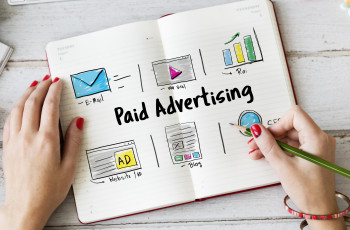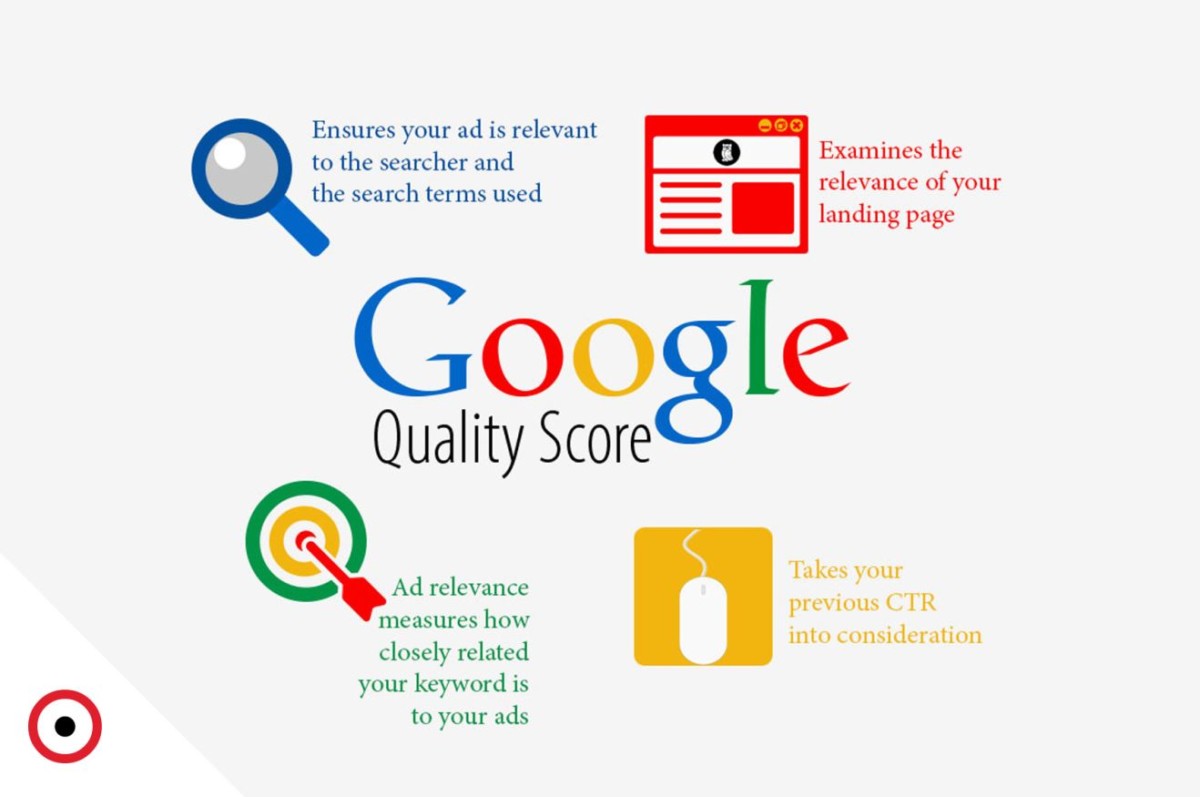Paid advertising is the form of marketing in which you pay for an ad space to connect with your target audience by settling through a bidding process. Pay-per-click, pay-per-impressions, and display ads are some of the main forms of paid advertising that could help communicate your brand message to your target persona.
Paid advertising is an expensive form of marketing. However, it is an effective way to expose your brand to the right audience in the quickest period. Earned media and owned media are good for the long-term vision of the business. However, paid ads could help you get quick traction by getting featured on popular websites and search results pages and customizing the campaign for your customer persona with the live data available.
Paid searches or search engine marketing effectively connect you with the audience when they are searching for the keywords relevant to your business. At the same time, Facebook advertising is an essential part of connecting with the audience who are the right fit for your business by narrowing down your target audience based on several factors, like demographics, behavior, location, etc. On the other hand, LinkedIn is an equally important social media to connect with professionals with higher decision-making power and is a right fit for B2B businesses.
Focus on these points while planning your paid advertising campaign:
1. Focus on keywords that are specific and have the right intent as per your business goal
Paid advertising keywords
It is crucial to focus on long-tail keywords that have a higher chance of matching the intent of buying your product or service in search engine marketing. If you search for a keyword list on Google keyword planner, Semrush, Ahrefs, Ubersuggest, etc., you will come up with a list of keywords that you could use for your business goal. However, the keyword’s search volume shouldn’t be a deciding factor for your advertising campaign.
For example, if you lookup for the keyword restaurants, you would come up with an amazing number in the volume section(16.6m to be precise). However, not all searchers are relevant to your business. Some of the people might be looking for restaurants that operate at night, others might be planning to open the restaurant, and there could be some other marketers who would just be searching the keyword to know which brands advertise on a given keyword, in this case, “restaurants.”
If you dig deeper into the search intent, it is unclear what the searcher wants to achieve by searching restaurant on the search result page. However, suppose you go for long-tail keywords, like Italian restaurants that operate at night. In that case, you get the indication that the searcher is looking to book a table in an Italian restaurant for their dinner. And, this keyword is more relevant for your campaign objective of driving more sales and leads for your business.
When looking for keywords, make sure that you list the relevant keywords with a good volume and lower difficulty.
2. Understand your campaign objective and choose the right digital marketing channel for your business
Campaign-objective
Banner ads have the purpose of promoting your brand and get visitors from the host website to your website with an image-based advertising approach.
Generally, all of the searches begin on the search engines (with the highest market share of Google). Suppose your target audience was looking for a product or service relevant to your business, then it makes sense to advertise for those relevant keywords. If you see clever marketing, some of the brands advertise on the keywords that are generally the name of their competitors and have a navigational user intent. As the ads appear on the top, it has some chances to steal the traffic and ultimately sales from the competitors. Hence, it is essential to advertise on your branded keywords to prevent Google from selling those spaces to your competitors.
Social media channels have allowed companies to directly sell with social selling and generate leads for the brand when the target audience is hanging on the social media channel with an inbound marketing approach. You could use social media advertising for brand awareness, increase social community size, and target audiences based on the behavior.
3. Track how your campaigns perform
First and foremost, choose your objective behind the marketing campaign. Is it to build brand awareness, drive consideration and engagement, or generate leads and sales? Once you know your objective, identify the critical metric you would judge to see whether your campaign is performing well or not. It could range from clicks, impressions, CTR, average engagement, conversions, conversion rate, cost per conversion, leads, cost per lead, impressions analyzed, valid impressions, etc.
You could compare your ad performance report against the industry standards to measure the performance. You must also set goals to improve your baseline numbers and optimize your campaign in real-time to improve your key metrics and see what performs best for your business.
On some of the platforms, for example, LinkedIn, you get to view demographic data, which might help you see which audiences respond best to your ads, which could help you optimize your target audience based on the results.
It is recommended to test variations of your ad creative randomly against each other, also known as A/B testing. If you optimize your targeting and bidding, you could improve your ROI considerably. Target CPA on Google is also an excellent way to maximize your ad campaigns in real-time. You can read this complete guide on Target CPA.
4. Improve your Quality Score
Quality score Google ads
You could be surprised to know that the highest bidder doesn’t always get the top spot on the SERP. Google is obsessed with its users and wants to perform a quality check to only allow the best pages and websites to rank on the top with paid searches. Quality Score is the metric represented on a scale of 1 to 10 and indicates whether your ads and landing pages are useful to the audience. Ad relevance, expected click-through rate, and landing page experience are the three factors that affect your quality score.
Ad relevance accounts on whether your landing page is relevant to the keyword you are targeting. The Google algorithm checks whether it makes sense to land on your landing page when a searcher is performing a Google search with those keywords.
CodeDesign is a leading digital marketing agency in Portugal, and is ready to assist you in your marketing campaign.
Your landing page must have a good user experience to convince the buyers to make the right call to action and persuade the algorithm that your landing page corresponds to what your ad is offering. Also, google’s main revenue channel is paid ads. Hence, it makes sense when your expected click-through rate becomes an essential factor for quality score.
5. Write an effective call-to-action
A call to action is useful to direct your visitors to take action as prescribed by you. CTA’s could appear as a button on a website, a pop-up box, or a banner. The purpose behind a call to action is to persuade the visitor to do something. Hence, try to be authoritative by using imperative language and action verbs that help people know what they should do. Words like shop, join, or click is some of the action words you should consider.
You must use persuasive language that helps people follow your direction. It would be best not to confuse your visitors with multiple CTA and keep the copy concise to build integrity and evoke a sense of value proposition.
6. Retarget your customers who have already visited your website
Retargeting ads are an essential aspect of paid advertising. If a visitor has already visited your website, it suggests that they could be interested in your product but is not willing to take action right now or need more convincing ads. Advertising to first-time viewers doesn’t make much sense as there is an entire customer journey involved in making a purchase. The viewers who have already visited your website attend the lower stage of the marketing funnel, and as a marketer, you must target those audiences to boost sales and conversion rates.
7. Ensure that your landing page is mobile responsive and loads fast
In this mobile-first era, it is crucial to ensure that your landing page is mobile responsive. A hundred customers would view your ad on a mobile device than a desktop. You could check the mobile responsiveness of your web page on Google’s mobile responsiveness tool. Follow this link to land at Google’s Mobile-Friendly Test page.
Also, the attention span of people has reduced considerably on digital platforms. If your website takes a long time to load, it means you are losing valuable customers. Ensure that your page loads fast as it is a crucial ranking factor along with user experience.
Conclusion
Paid advertising could help you get audience exposure at your preferred digital marketing channel and time. You must be sure that you know your customers well as it would facilitate your chances of communicating with your target audience at their preferred time and channel. The other forms of marketing, like owned media, could take time to bring organic results, and earned would need to establish authority. CodeDesign has helped many companies improve their revenue, decrease the cost of acquiring customers, and increase the lifetime value. Feel free to check our portfolio and half an insight about our expertise in the marketing domain
CodeDesign is a leading:
– Amazon marketing agency, and
Feel free to contact us to see an unprecedented growth of your business.
About the author:
We are Codedesign – a multi cultural, technology, award-winning digital marketing agency. We can be define as a result-led, innovative digital marketing agency specializing in Digital Marketing, Ecommerce, Online Sales, Amazon Sales with a team of experts in Search Engine Optimization (SEO), Pay Per Click Strategy and Campaigns, Social Media, Content Marketing, Data Analytics, Ecommerce development, Software development, CRM integrations.








